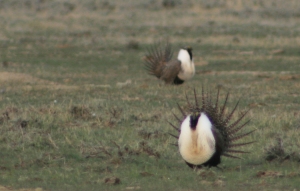Source: Northern Ag Network
If the Montana Department of Livestock and the Fish Wildlife and Parks can’t come to agreement on an issue of bison management, the governor gets to decide is the advice that the Montana Attorney General’s office is giving the Board of Livestock (BOL). In this case, it means that Yellowstone Park bison will get to be in Montana year round.
In April, the BOL had received a letter from the governor stating that since they had been unable to come to agreement with the Fish Wildlife and Parks (FWP) regarding a management change to the Interagency Bison Management Plan (IMBP) to allow year round tolerance for bison in West Yellowstone and Gardiner, the governor would make the final decision and sign for them.
The BOL followed up to the Montana Attorney General’s Office, requesting a legal opinion regarding the legal roles of the agencies and the govenor in deciding the bison tolerance zone. The AG’s office has responded with a confirmation of the Governor’s statement, that “on bison management issues, the two departments, Department of Livestock and FWP, must cooperate, and any management conflicts are resolved by the Governor.”
Mike Honeycutt, Executive Officer of the Department of Livestock outlined the AG’s response. “The Department of Livestock has powers and duties to manage bison when they present a disease risk. The Fish Wildlife and Parks has responsibility to manage wild bison when are not a disease risk. If there is any potential for disease risk, FWP is supposed to cooperate with the Department of Livestock in that respect.”
“At the end of the day, if those two agencies can’t to come to an agreement on precise points of policy and how to get things done, the governor, as the executive of the state, has the power to make the decision for the agencies, tell them that this is where the lines are going to be and this is how each agency is going to carry out its legal responsibility around that decision that the governor has made,” Honeycutt said.
“I know that may not be an answer a lot of people in our industry want to hear. I think they might have wanted to hear that the park boundary is the park boundary and that’s where we are supposed to push bison to,” acknowledged Honeycutt.
The BOL also asked for help to clarify the department’s responsibilities in bison management in the new tolerance zone. The AG’s office responded that the state statutes in place are very clear. Whether the border is the park boundaries or the new tolerance zone, the DOL’s job is to prevent disease transmission from the bison to cattle.
Honeycutt explained, “Our job, at this point from the Department of Livestock, is where maybe the old boundary was pushing all bison back to the park, our job now making sure that bison stay in the zones where they have tolerance and that our employees are keeping the separation between them and the cattle herds that will be grazing for the summer.
Honeycutt said “We are still in the position of making sure we maintain separation between potentially diseased bison and where cattle herds will be operating at.”
“We do not want potentially diseased bison occupying, in any shape or form, the same space that’s going to be occupied by summer grazing cattle.”
CLICK HERE to read a copy of the letter from the Attorney General’s office






Comments Needed on New State Land Access Program Rule
The Montana Fish & Wildlife Commission is seeking comment on a proposed rule that would offer tax incentives to private landowners who provide public access to state lands.
The proposed rule is in response to a new law that established the Unlocking State Lands Program. Under the program, landowners can receive a $500 tax credit by providing public access to a parcel of state land through contractual agreements with Montana Fish, Wildlife & Parks. A tax credit would be offered for each qualified access point, with a limit of $2,000 per year, per landowner.
The law requires the commission to adopt administrative rules for establishing contracts that address duration of access, types of qualified access, and reasonable landowner-imposed restrictions.
The law becomes effective Jan. 1, 2014 and terminates Dec. 31, 2018.
Public comment on the draft rule will be accepted through, Dec. 27. Copies of the draft rule and comment forms are available online at fwp.mt.gov, click “Public Notices“. E-mail comments to [email protected]; or mail to Alan Charles, Montana Fish, Wildlife & Parks, P.O. Box 200701, Helena, MT 59620-0701.